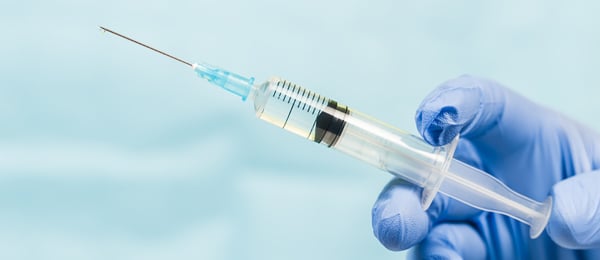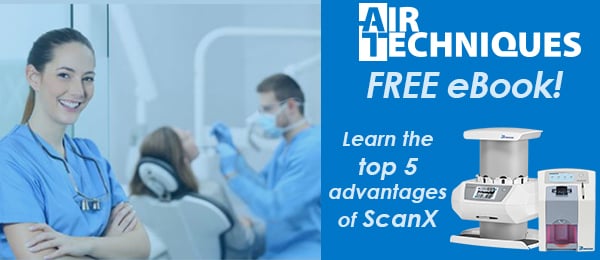Maxillary sinus volume and concha bullosa, nasal septal deviation, and impacted teeth
The maxillary sinus is the largest of the 4 paranasal sinuses, and it plays an important role in the development of facial contours. The aim of this retrospective study was to examine the association of maxillary sinus volume (MSV) with nasal septal deviation (NSD), concha bullosa (CB), and impacted third molars and canines using cone-beam computed tomography (CBCT). The findings were published online September 21 in European Archives of Oto-Rhino-Laryngology.
The study cohort consisted of 55 patients (41 women, 14 men) 18 years or older who attended an oral and maxillofacial radiology clinic in Konya, Turkey, from September 2014 through April 2019. Participants’ mean (standard deviation [SD]) age was 22.20 (7.64) years.
The researchers excluded patients with previous nasal, nasopharyngeal, paranasal sinus, or adenoid surgery; jaw-facial trauma; congenital nasal anomalies; sinonasal diseases such as allergic rhinitis or chronic rhinosinusitis; and missing teeth (except maxillary third molars).
All CBCT images were obtained with a 3D Accuitomo unit (J. Morita Manufacturing) according to the following manufacturer-recommended parameters: 90 kilovolts, 5 milliamperes, 17.5-second exposure time, and a 140- × 100-millimeter field of view. The investigators converted the images to DICOM (Digital Imaging and Communications in Medicine) format to calculate the MSV.
One investigator obtained all measurements in this study. He used MIMICS 21.0 software (Materialise) to measure MSV—right and left sides separately—in all patients. The researchers limited thresholding to a minimum of -1,024 Hounsfield units and a maximum of 526 Hounsfield units.
The investigator determined the presence of NSD on the coronal CBCT images. He drew a linear line from the maxillary anterior spine to the crista galli and then measured the angle between the most deflected part of the nasal septum and the line. If the deviation was greater than 9 degrees, NSD was considered to be present.
The researchers used coronal images to evaluate the presence of CB. The right and left middle turbinates (nasal conchae) were evaluated separately. The study findings showed no ostiomeatal obstruction in patients with CB.
Using axial, coronal, and sagittal images, the investigator evaluated impacted maxillary canines and molars. The researchers considered teeth to be impacted if they were not exposed to the oral cavity and had more than 75% of root growth.
The mean (SD) MSV of study participants was 13.72 (5,023.12) cubic centimeters. The authors observed no statistically significant difference between the right and left sides (P > .05). The mean (SD) right and left MSVs in men were 16.106 (5.524) cm3 and 17.332 (7.183) cm3, respectively, while the right and left MSVs in women were 12.699 (4.184) cm3 and 12.704 (3.983) cm3, respectively. The differences in MSVs between men and women were statistically significant (P < .05). The study results revealed no statistically significant correlation between MSV and age.
The study findings also revealed that the MSVs of patients with NSD were not significantly larger than those of patients who did not have NSD (P > .05). In addition, the presence of NSD did not differ according to sex or age (P > .05).
Of the 55 patients in this study, 17 (30.9%) had right CB and 18 (32.7%) had left CB, the authors wrote. The Mann-Whitney U test revealed no statistically significant association between CB and patients’ sex or age (P > .05). Moreover, the researchers observed no significant difference in the MSVs of patients with and without CB (P > .05).
According to the CBCT images, 27 patients (49.1%) had impacted right third molars and 26 (47.3%) had impacted left third molars. In addition, 1 patient (1.8%) had an impacted right canine, and 3 (5.5%) had an impacted left canine. As with the CB and NSD, the study findings showed no association between MSVs and impacted third molars or canines (P > .05). However, the results showed that the MSV was significantly larger in men than in women (P < .05).
Future studies are needed that have larger samples that cover the general population and include patients with ostiomeatal obstruction, a condition that affects sinus patency and possibly MSV, the authors concluded.
Read the original article here or contact the ADA Library & Archives for assistance.

A technique to establish the optimal injection point into the temporomandibular joint
Hyaluronic acid has been shown to be effective in the management of osteoarthritis of the temporomandibular joint (TMJ). Therefore, the aim of this retrospective, dual-center study was to develop a reproducible and easy-to-use technique to establish the best site for injection into the TMJ that ensures stable positioning of the condylar process. The study was published online September 21 in British Journal of Oral and Maxillofacial Surgery.
The study sample was composed of 12 patients (7 women, 5 men) whose ages ranged from 43 through 65 years. The researchers obtained impressions of each patient’s maxillary and mandibular dentition and then inserted a wax bite block in a position that was about 4 millimeters short of maximal opening. They marked the Guarda-Nardini point and injection point on the patient’s face. (The Guarda-Nardini injection point, used in single-injection arthrocentesis, is located 10 mm from the tragus on the trago-lateral canthus line and 2 mm inferior to this line.) Using a dental plugger, the researchers then placed softened gutta-percha on the injection point.
The researchers obtained cone-beam computed tomographic (CBCT) images from each patient. By using axial and multiplanar views, they were able to determine the precise position, depth, and angle of the injection. With the wax bite block in place, the clinician inserted the needle at the corrected Guarda-Nardini injection point.
The researchers determined the angle of insertion by using a line drawn from the Guarda-Nardini point perpendicular to the skin, which was parallel to the axial plane. The mean angle of insertion was 30° to 35° caudally. The horizontal angle coincided with the perpendicular line.
Horizontal deviation (mean, 1.1 mm) or vertical deviation (mean, 1.3 mm) of the injection point from the marked point occurred in all 12 patients, particularly those with anatomic anomalies, the authors wrote.
The technique described in this article is safe and reproducible and enables the clinician to establish the optimal point of injection into the TMJ. It has several advantages over use of a fixed injection point, including minimal trauma to the TMJ because the risk of intra-articular injury is reduced considerably, preoperative planning helps ensure that any anatomic abnormalities are identified, the risk of the needle’s being injected extra-articularly is reduced appreciably, postoperative discomfort is minimal because the additional volume of fluid dissolves rapidly from the intra-articular space, and additional local anesthetic is not required because only a single injection is needed.
In addition, the CBCT images can be stored, reevaluated, and compared with images obtained at later stages of treatment, which enables easier follow-up of the affected TMJ, the authors concluded.
Read the original article here or contact the ADA Library & Archives for assistance.

Assessing the midpalatal suture maturation stage in adolescents and young adults
Identification of a patient’s midpalatal suture (MPS) maturation stage is helpful when considering treatment using rapid maxillary expansion (RME). If the suture is open, orthodontic RME can be used to correct transverse maxillary constriction. If the suture is fully ossified, surgically assisted RME (SARME) may be used to accomplish this goal. Therefore, the purpose of this retrospective study, published online October 8 in Progress in Orthodontics, was to evaluate patients’ MPS maturation stages using cone-beam computed tomography (CBCT).
The study sample consisted of 200 CBCT images obtained from 95 male and 105 female patients attending a dental diagnostic imaging center in Lima, Perú. The researchers categorized participants into 3 groups: adolescents (aged 10-15 years) (n = 48), postadolescents (aged 16-20 years) (n = 52), and young adults (aged 21-25 years) (n = 100).
The researchers excluded patients who had undergone orthodontic treatment or wore any oral appliance, as well as those with maxillofacial trauma, odontogenic pathologies, cleft lip and palate, or syndromic conditions. In addition, they excluded patients whose CBCT images exhibited noise or were blurry.
All CBCT images were obtained with a Planmeca ProMax 3D Mid unit (Planmeca USA) set to the following specifications: field of view of at least 11 centimeters, 90 kilovolts, 10 milliamperes, voxel size of 0.2 through 0.3 millimeters, and exposure time of 13.68 seconds. The researchers used Planmeca Romexis software (Planmeca USA) to analyze a cross-sectional axial slice of the CBCT image.
Two calibrated examiners analyzed the images and classified them according to 5 maturation stages: A, B, and C stages were considered to be an open MPS, and D and E stages were considered to be a fused MPS. The weighted Κ coefficients for evaluation of intraexaminer and interexaminer measurement error were 0.89 and 0.90, respectively, indicating almost perfect agreement.
Of the 200 CBCT images, 63 (31.5%) showed an open MPS (that is, stage A, B, or C). Stage E (79 images [39.5%]) was the most prevalent maturation stage in this study, followed by stages D (58 [29%]), C (45 [22.5%]), B (16 [8%]), and A (2 [1%]), the authors wrote. The study findings showed that 70.8% of patients aged 10 through 15 years had an open MPS, whereas 21.2% of those aged 16 through 20 years and 17% of those aged 21 through 25 years had an open MPS. The findings also showed that among patients aged 16 through 20 years and 21 through 25 years, the proportion of males with an open MPS was higher than the proportion of females with an open MPS, the authors wrote.
About 20% of patients in this study 16 years or older had an open MPS, the authors wrote. Therefore, orthodontists should take this information into consideration when maxillary expansion treatment is needed. Moreover, owing to variability in ossification of the MPS, the researchers recommend use of CBCT to evaluate a patient’s MPS maturation stage and determine whether RME or SARME should be used.
Read the original article here or contact the ADA Library & Archives for assistance.

Arthritis of the temporomandibular joint 17 years after disease onset
Arthritis of the temporomandibular joint (TMJ) is a common finding in patients with juvenile idiopathic arthritis (JIA). A chief concern with respect to childhood TMJ arthritis is the development of temporomandibular disorders and dentofacial deformities. The objectives of this prospective study were to determine the prevalence of orofacial symptoms, dysfunction, and deformities of the TMJ in patients with JIA 17 years after disease onset. This study was published in the December issue of The Journal of Rheumatology.
The study cohort was composed of 265 patients (186 women, 79 men) who had received a diagnosis of JIA by pediatric rheumatologists in Denmark, Finland, Norway, and Sweden. Disease onset occurred from 1997 through 2000. The mean (standard deviation [SD]) follow-up time from disease onset to orofacial examination was 17.3 (1.3) years. The mean (SD) age of participants was 23.5 (4.2) years. The control group consisted of 200 healthy age-matched people.
Patients with at least 2 follow-up visits were eligible for study inclusion. The researchers excluded those with cleft lip and palate or other dentofacial and craniofacial anomalies unrelated to arthritis.
The baseline visit occurred a mean of 6 months after disease onset, which was defined as the date on which the first arthritis symptoms were described by the patient, parents, or the physician. At this visit and at follow-up visits, the researchers recorded the number of joints, including TMJs, with active disease. At the final follow-up visit, researchers updated patients’ demographic data, conducted standardized clinical orofacial examinations, and performed cone-beam computed tomography.
To assess disease activity, the researchers used the validated Juvenile Arthritis Disease Activity Score. In addition, they defined TMJ involvement according to the terminology of the consensus-based Temporomandibular Joint Juvenile Arthritis Work Group.
All patients with JIA and control participants completed a Web-based questionnaire regarding orofacial pain frequency (ranging from “never” to “all the time”), intensity, and location, as well as jaw function within the preceding 2 weeks.
Eight trained investigators performed standardized clinical examinations—including assessment of maximal incisal opening, TMJ pain on palpation, and asymmetric mouth opening—in all patients with and without JIA.
The researchers performed CBCT examinations in 245 patients with JIA (92%) according to the manufacturer’s recommendations regarding radiation dose, exposure time, and voxel size. A field of view of at least 12 inches was used. One experienced observer, who was blinded to patients’ clinical and demographic data, reviewed all CBCT volumes in the lateral, coronal, and axial planes. The radiologic appearance of the condylar head was scored as normal or abnormal. In addition, the observer subcategorized abnormal condyles on the basis of the predominant radiologic feature. For ethical reasons, the researchers did not perform CBCT in the control participants.
Of the 265 patients with JIA, 87 (32.8%) reported at least 1 TMJ-related symptom at the follow-up visit, which was not significantly different from the results for participants in the control group. However, the investigators observed orofacial pain frequency and number of symptoms, TMJ pain, morning stiffness, and chewing limitations significantly more often in the JIA group than in the control group.
The mean (SD) maximal incisal opening in the JIA group (47.2 [7.7] millimeters) was significantly lower than that in the control group (56.5 [6.8] mm) (P < .001), the authors wrote. Furthermore, TMJ pain on palpation occurred more often in the JIA group than in the control group (P = .03).
Of the 245 patients with JIA in whom CBCT was performed, 149 (60.8%) had at least 1 abnormal TMJ. Furthermore, in 104 of these patients (69.8%), bilateral TMJ deformities were shown on the CBCT images. Abnormal condylar findings were most prevalent in the rheumatoid factor–negative polyarticular group (39/51 patients [76.5%] ) and least prevalent in the enthesitis-related arthritis category (8/24 patients [33.3%]). Patients with TMJ pain on palpation had twice the odds of having an abnormal TMJ on the CBCT image (odds ratio, 2.1; 95% CI, 1.08 to 4.1). A reduced mouth opening also was strongly associated with an abnormal TMJ on CBCT, the authors wrote.
The results of this population-based study of patients with JIA in the early biological era show persistence of symptoms, dysfunction, and damage to the TMJ 17 years after disease onset. The researchers recommend interdisciplinary follow-up of patients with JIA into adulthood.
Read the original article here or contact the ADA Library & Archives for assistance.
What's all the chatter about?
Don't compromise when it comes to digital imaging. ScanX is the only digital radiography system that offers you efficiency without compromise. Choose a system that fits your individual workflow needs. There are 7 different models to choose from, after all 1 size does not fit all. Click the link to receive your free eBook that uncovers the top 5 advantages of ScanX. Learn why everyone is chattering about ScanX.
Need CE? ADA CE Online has hundreds of hours of CE that you can earn from the comfort of your own home. Too many to choose from? Take them all! Get unlimited access to the entire ADA CE online library, including JADA, for one year from purchase. Access anywhere, anytime. With new courses being added every month, you’ll never run out of education opportunities. Group subscriptions are also available, check it out now!

The consulting editor for JADA+ Specialty Scan — Radiology is Laurie C. Carter, DDS, Ph.D., past president, American Academy of Oral and Maxillofacial Radiology. |
|






